If you’re hitting the trail this winter, you may already know what to wear and pack, where to go, and how to stay safe. If you’re looking to try winter hiking with dogs, there are some important things to remember when it comes to keeping your furry friend warm, safe, and happy. And, you can scope out our furry friends and their favorite winter activities below.
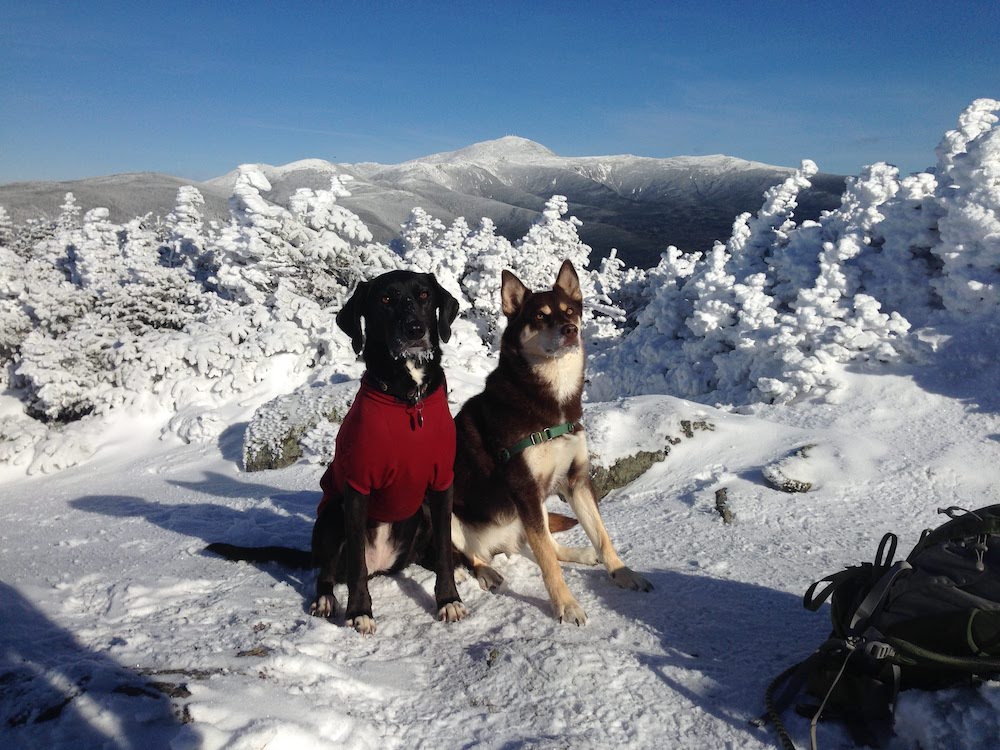
Breed
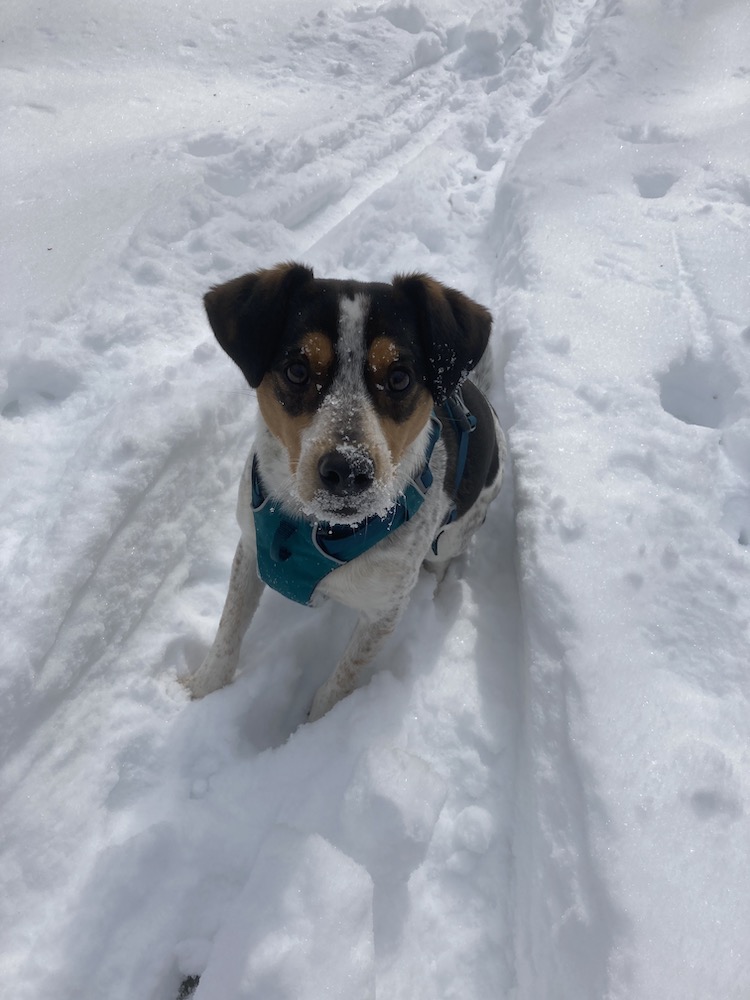
The breed of your dog is an important factor to consider when winter hiking. Some breeds, like the different types of sled dogs, are made for the cold weather and will need little-to-no gear and will be more comfortable on long hikes through the snow. Other breeds, like Golden Retrievers, have long fur that may keep them warm but can be prone to clumping snow. Smaller breeds will have a harder time traveling through deep snow. These details will help you determine what type of gear your dog needs and what trail is appropriate for your dog.
Ability
Although your dog’s breed may be built for cold climates they may not be physically conditioned for long hikes in deep snow if they don’t hike regularly. Age and underlying health issues will also affect their ability to stay warm. An honest assessment of your dog’s health and fitness level is crucial in choosing a trail to hike. Check our HikeVT winter recommendations for trails of easy and intermediate difficulty if you need some help getting started.
Trail Conditions
Winter trail conditions can vary day to day. Stretches of trail that your dog could easily navigate in the summer may be covered in ice in the winter. Fresh snow may mean breaking trail for miles. Some trails may not allow dogs in the winter due to high use by skiers. Research trail conditions and rules before you head out, so both you and your dog can safely navigate the terrain. If you have specific questions, contact GMC by email or phone (802-244-7037).
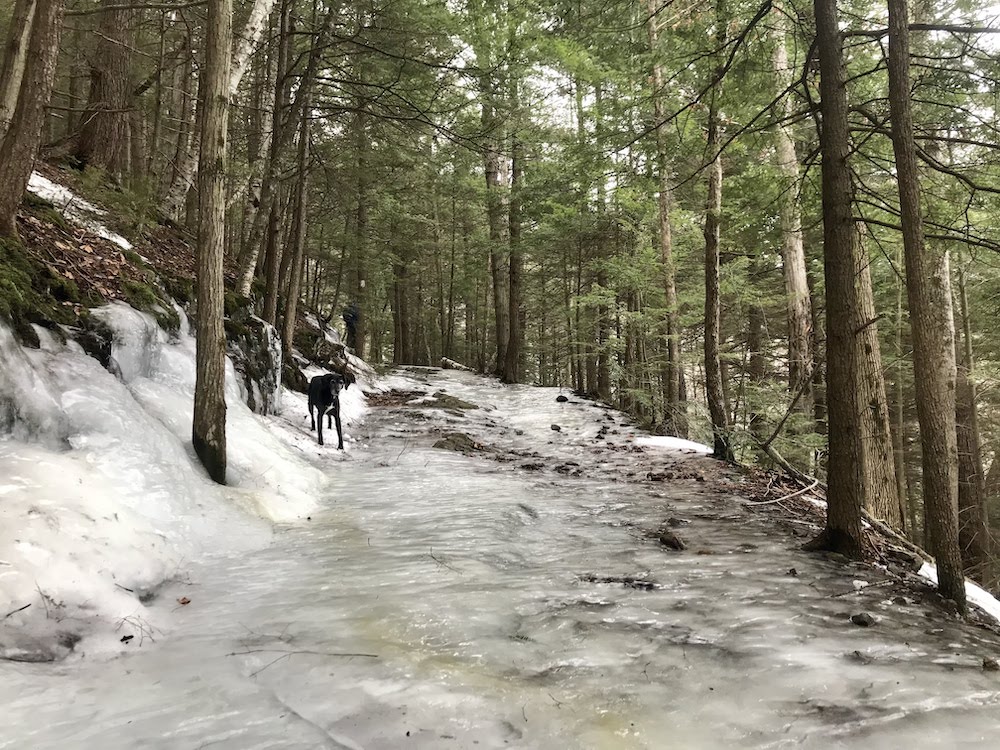
Gear
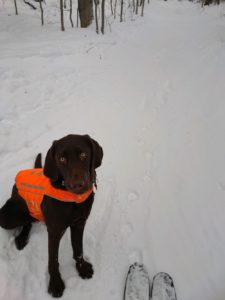
There are a lot of gear options that can help keep your dog comfortable on a winter hike. Anything from sleeping bags to goggles are available for dogs. Most dogs only need a warm coat, while others may need booties to keep their feet warm and protect them from snow and ice. A paw wax can also help protect against snow and ice buildup, as well as help condition dry and cracked pads.
Like any outdoor gear, it can get expensive. You can find used pet gear through REI, or try your local list serve and consignment stores. Here is a recipe to make your own paw wax.
Water
Although there is plenty of snow that your dog may love to eat, it will not provide the proper hydration needed for a long winter hike. Natural water sources may be frozen or covered in snow, so bring extra water and a collapsible bowl for your dog.
Hypothermia
Knowing the signs of hypothermia is also important. Shivering, lethargy, difficulty walking, and pale gums are all signs of hypothermia in dogs. Being prepared is the best prevention. Remember to research and choose a trail well within you and your dog’s ability and make sure to have the proper gear to keep your dog warm.
Waste
As with human waste, you should deposit dog waste into catholes dug 6 to 8 inches deep, at least 200 feet from water, camp, and trails. Above treeline or in snowy and icy conditions, be prepared to pack it out.
Read more about Leave No Trace with dogs.


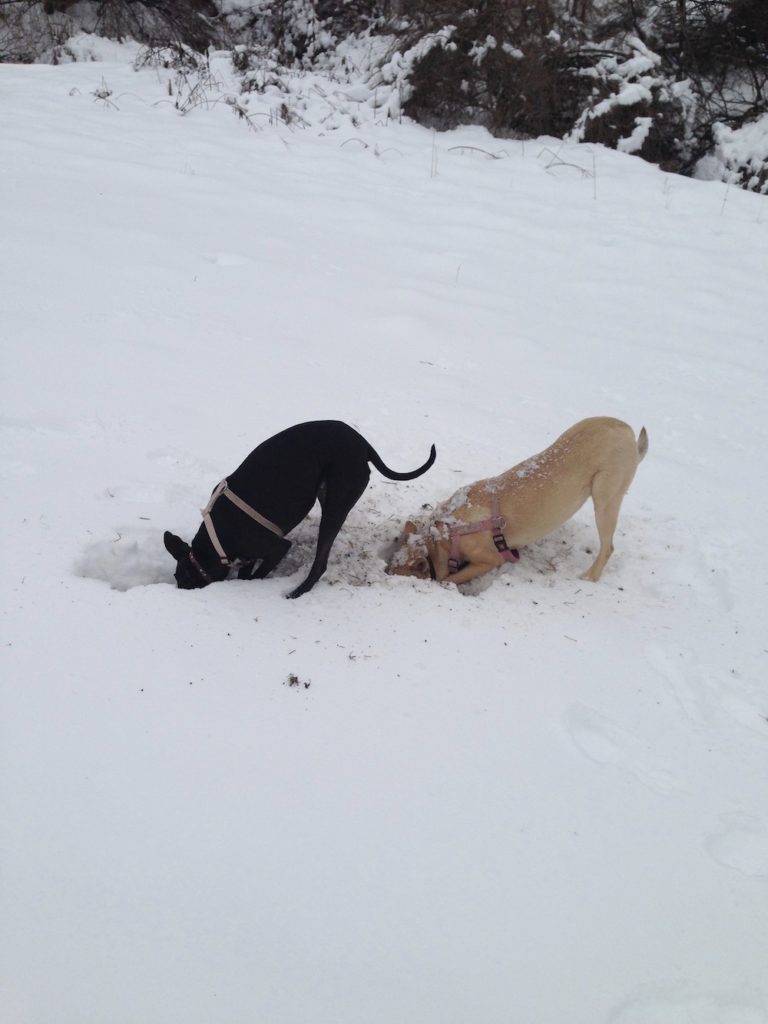
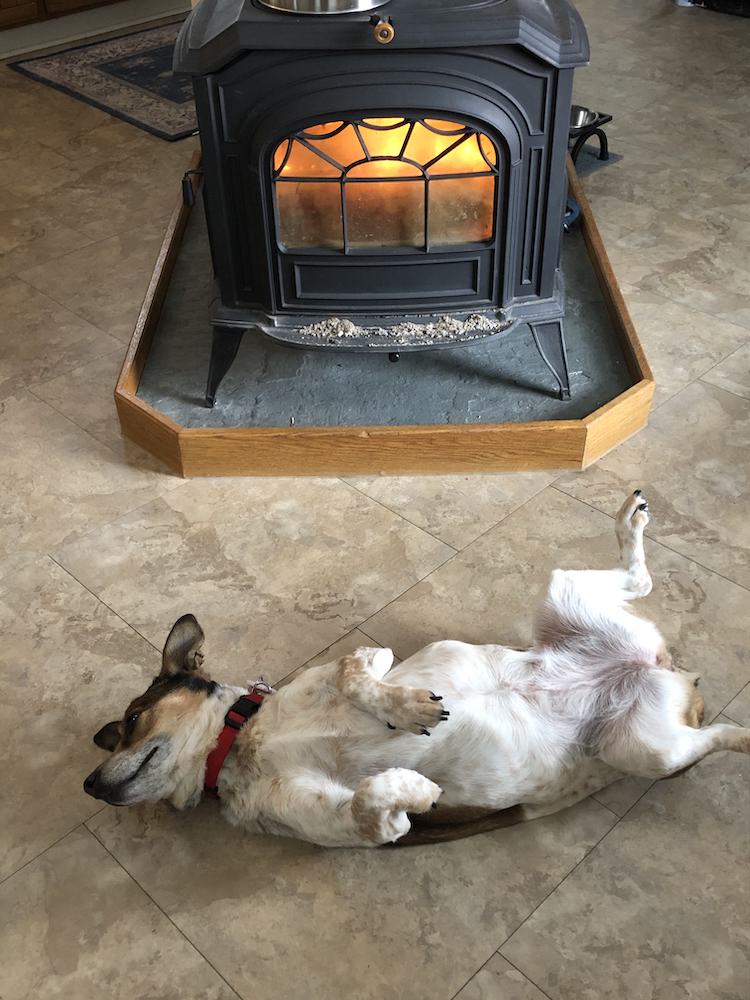
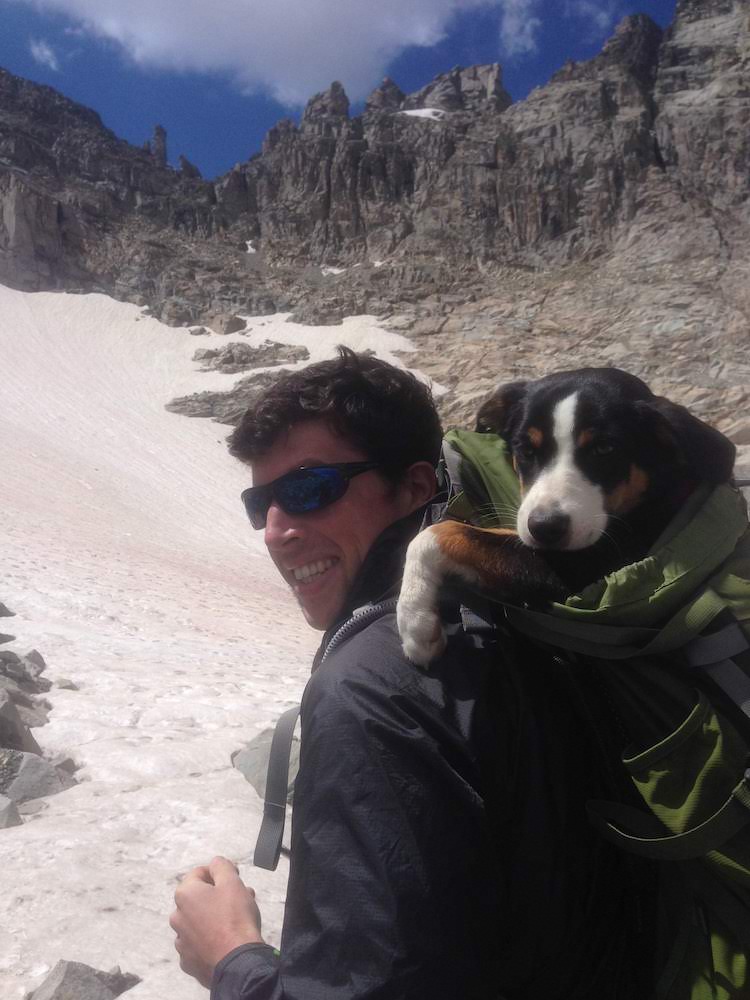
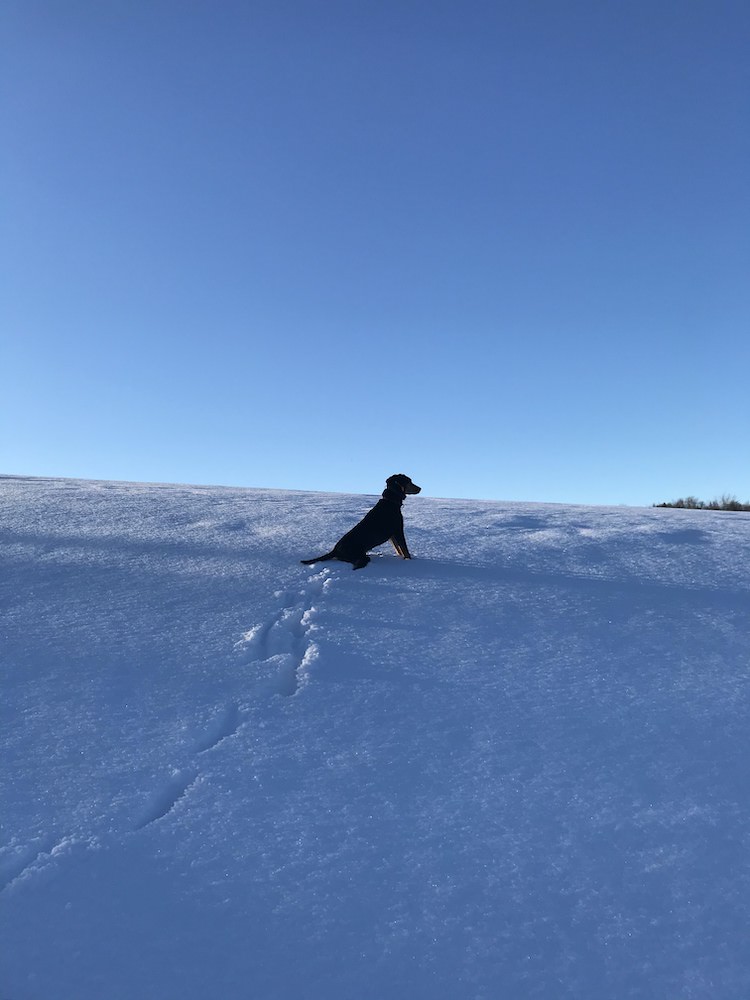
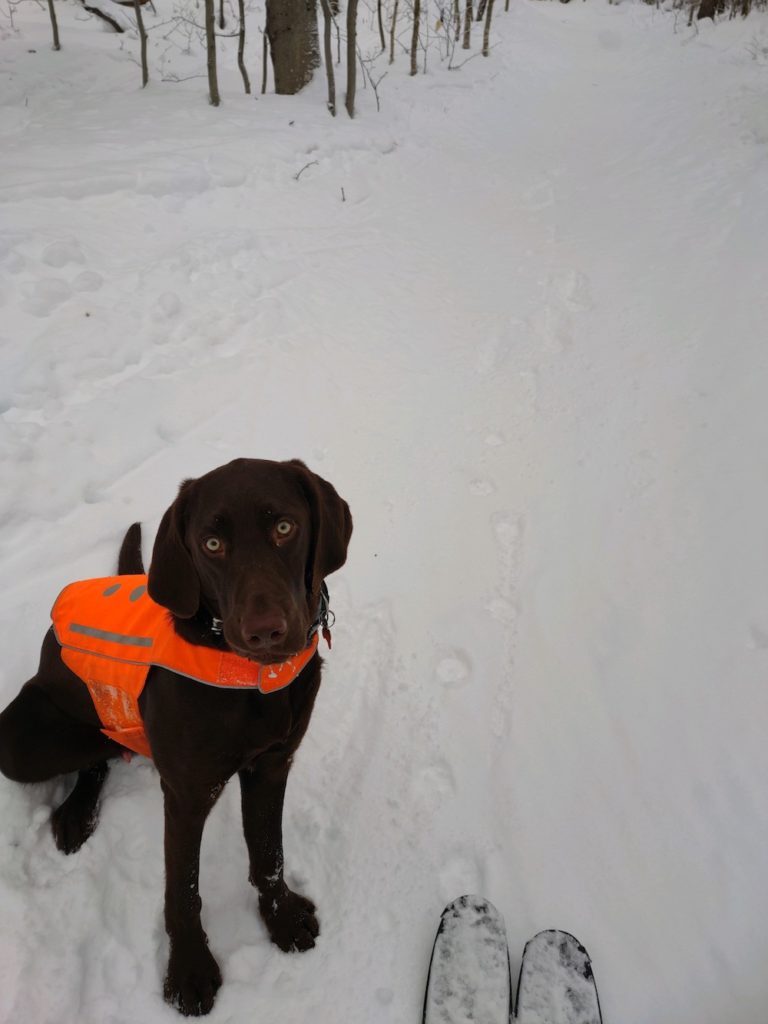

















There are also hidden hazards for dogs during winter hiking, such as partially traps along waters edges, frozen ponds, hidden barbed wire fences and sharp sticks below the snow that can impale a dog. Consider using a trekking line, or keeping your dog ON the trail
while hiking. Also, should your dog slip on ice, or become injured, you should have a means to carry him/her out on the trail. We carry a FidoPro Airlift emergency sling. Ans those who ski with their dogs, be careful….metal edges on skis can severely lacerate a dog if there is a fall/collision/inadvertent contact. Have fun, but stay safe!